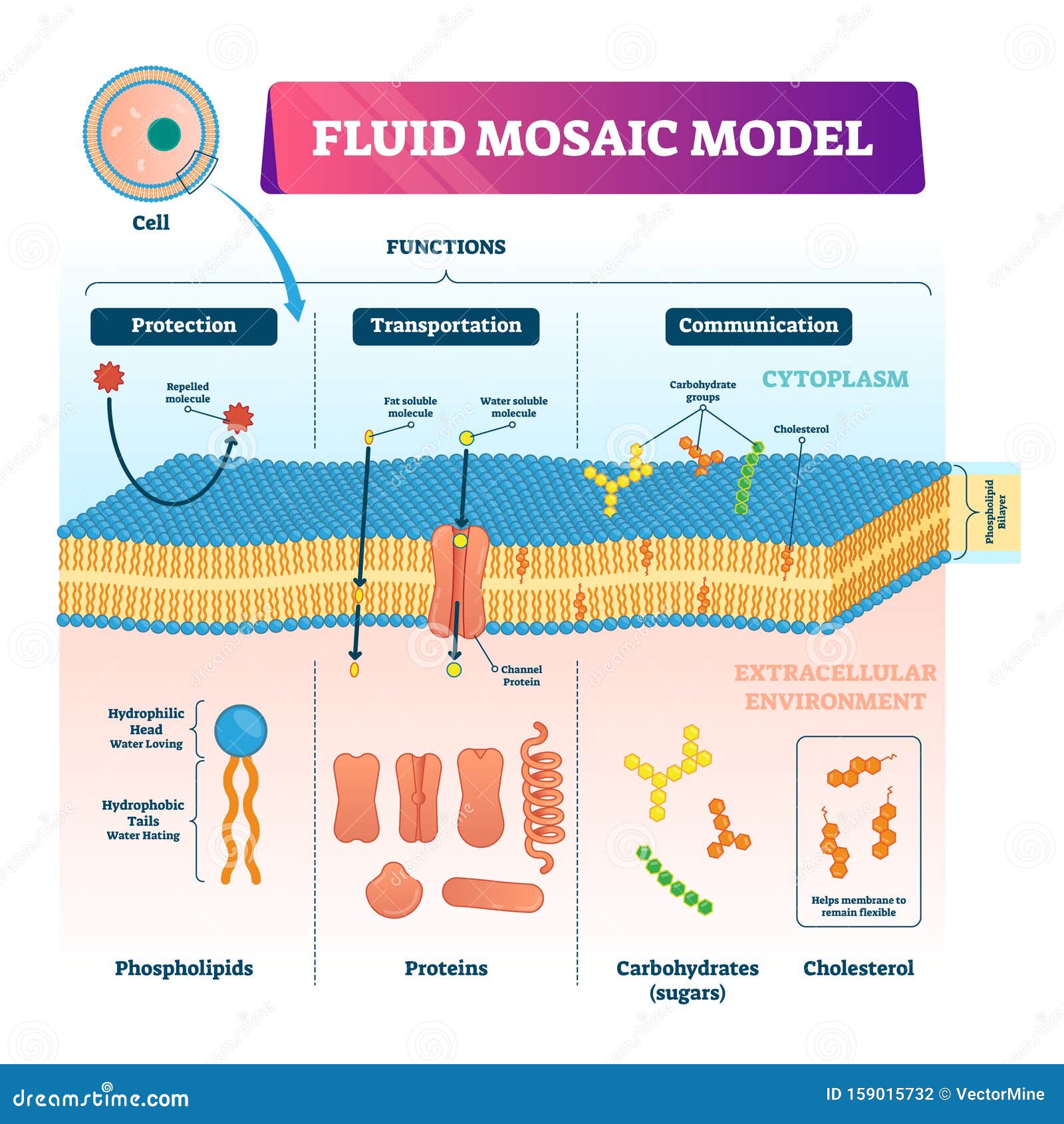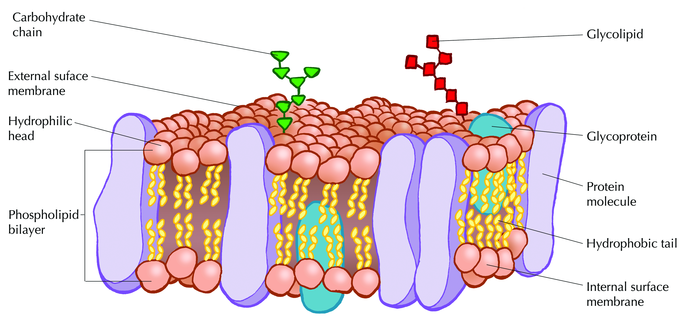Find more free tutorials videos and readings for the science classroom at ricoch. Lipids proteins and carbohydrates in the plasma membrane can diffuse freely throughout the cell membrane.
Cell Membranes And The Fluid Mosaic Model Boundless Anatomy And Physiology
The proportions of proteins lipids and carbohydrates in the plasma membrane are different from cell types.

Plasma membrane fluid mosaic. The main biological membrane of a cell is the plasma membrane. According to this biological model there is a lipid bilayer in which protein molecules are embedded. The fluid mosaic model explains various observations regarding the structure of functional cell membranes.
Plasma membranes range from 5 to 10 nm in thickness. This model explains the structure of the plasma membrane. Small amounts of carbohydrates are also found in the cell membrane.
Fluid mosaic model was proposed by SJ. The biological model which was devised by SJ Singer and G. The protoplasm of every living cell is enclosed by a plasma membrane.
Cells exclude some substance take in others and excrete still others all in controlled quantities. Singer and Garth L. Plasma membranes made up of phospholipids proteins cholesterol and carbohydrates.
The fluid mosaic model of plasma membrane is the most accepted hypothesis which describes the membranous components and their functions. The fluid mosaic model describes the structure of the plasma membrane as a mosaic of components including phospholipids cholesterol proteins and carbohydratesthat gives the membrane a fluid character. Plasma membranes range from 5 to 10 nm in thickness.
This model states that the components of a membrane such as proteins or glycolipids form a mobile mosaic in the fluid-like environment created by a sea of phospholipids. Plasma membranes range from 5 -10 nm in thickness. At room temperature it has about the same consistency as vegetable oil.
The plasma membrane that surrounds these cells has two layers a bilayer of phospholipids fats with phosphorous attached which at body temperature are like vegetable oil fluid. The lipid bilayer gives fluidity and elasticity to the membrane. The fluid mosaic model describes the structure of the plasma membrane as a mosaic of components including phospholipids cholesterol proteins and carbohydratesthat gives the membrane a fluid character.
The mosaic model of membrane structure describes the structure of the plasma membrane as a mosaic of components including phospholipids proteins carbohydrates cholesterol and proteins that gives the membrane a fluid character. The fluid mosaic model is one way of understanding biological membranes consistent with most experimental observations. This 2 minute animation describes the components a cells plasma membrane.
Biology Chapter 34 The Cell Membrane Learning Objectives -Understand the fluid mosaic model of membranes-Describe the functions of phospholipids proteins and carbohydrates in membranes Introductory 1. Plasma membranes enclose the borders of cells but rather than being a. The cell membrane consist of a phospholipid bilayer as well as integral.
Nicolson in 1972 describes the cell membrane as a two-dimensional liquid that restricts the la. This is a short video about the cell membrane of the eukaryotic cells. The fluid mosaic model of the cell membrane is how scientists describe what the cell membrane looks and functions like because it is made up of a bunch of different molecules that are distributed across the membrane.
According to this model the plasma membrane is similar to a fluid in which various molecules are arranged in a mosaic-like pattern. Cholesterol and proteins are embedded in the bilayer that gives the membrane a mosaic look. This biology video tutorial discusses the fluid mosaic model of the plasma membrane.
This is a short video about the cell membrane of the eukaryotic cells. These components give a fluid character to the membranes. The fluid mosaic model describes the structure of the plasma membrane as a mosaic of components including phospholipids cholesterol proteins and carbohydratesthat gives the membrane a fluid character.
The plasma membrane is impermeable to ions and most water-soluble molecules. The Fluid part represents how some parts of the membrane can move around freely if they are not attached to other parts of the cell. They are essentially floating across its surface.
The fluid-mosaic model describes the plasma membrane of animal cells. The Fluid Mosaic Model states that membranes are composed of a Phospholipid Bilayer with various protein molecules floating around within it. The current model that explains the structure of biological membranes is called the fluid mosaic model.
It is a fluid mosaic of lipids proteins and carbohydrate. The plasma membrane also known as the cell membrane or cytoplasmic membrane is a biological membrane that separates the interior of a cell from its outside environment. Fluid Mosaic Model Technically the cell membrane is a liquid.
And the structure of the plasma membrane supports the old saying Oil and water dont mix.

Cell Membrane Structure Function And The Fluid Mosaic Model Youtube

Fluid Mosaic Model Of Cell Membrane Structure Quote Cell Membrane Structure Cell Membrane Cell Biology

The Fluid Mosaic Model Introducing The Cell

The Fluid Mosaic Model Systems Biology Cell Membrane Biology Lessons
